Amanyangyun, in Shanghai, is a fine example of what can be achieved when a hospitality project combines a mission to preserve cultural and natural heritage with a superhuman effort from those involved. In 2002, Ma Dadong – president of Shanghai Gu Shan and Shanghai Gu Yin Real Estate – took the momentous decision to save a centuries-old camphor forest and an ancient village from destruction following the Chinese government’s plans to create the Liao Fang Reservoir in Jiangxi province, Dadong’s native land.
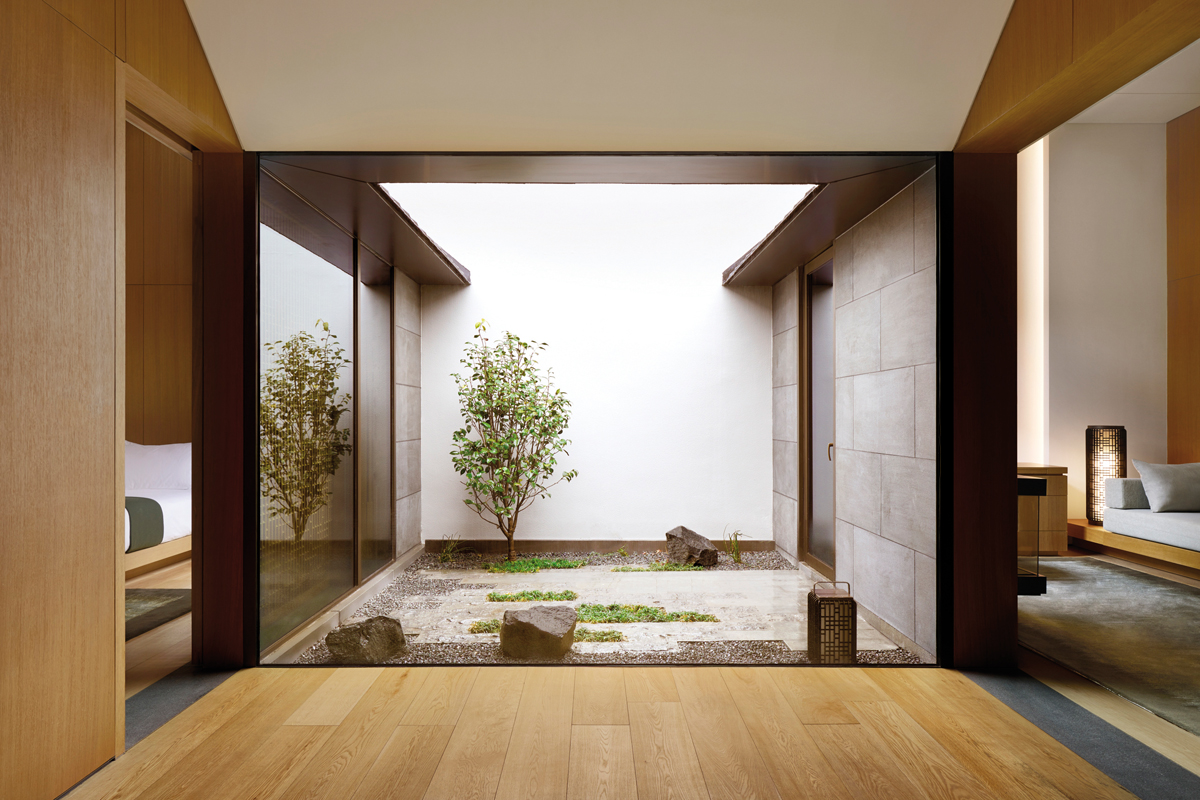
In the ten years that followed, a team of botanists, engineers, architects and craftspeople worked tirelessly to remove and preserve thousands of camphor trees, as well as dismantling traditional dwellings dating back to the Ming and Qing eras piece by piece.
This painstaking conservation effort culminated in the complicated relocation of the trees and the village over 700 kilometres away, in Maqiao Town, on the outskirts of Shanghai.
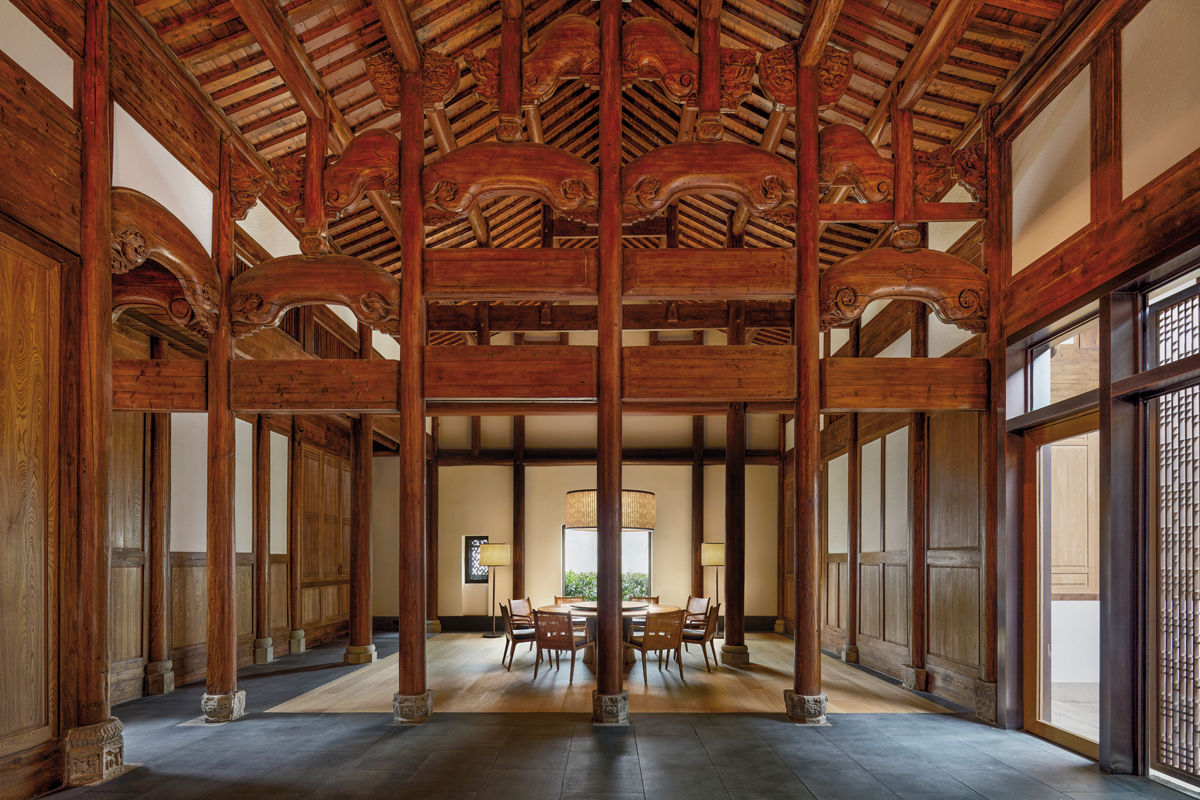
Thanks to an agreement reached in 2011 with the then president of the Aman group, Adrian Zecha, the forest and village have now become the physical and spiritual heart of the design for the fourth Aman hotel in China, which followed Aman Summer Palace, Amandayan and Amanfayun by opening at the start of 2018.
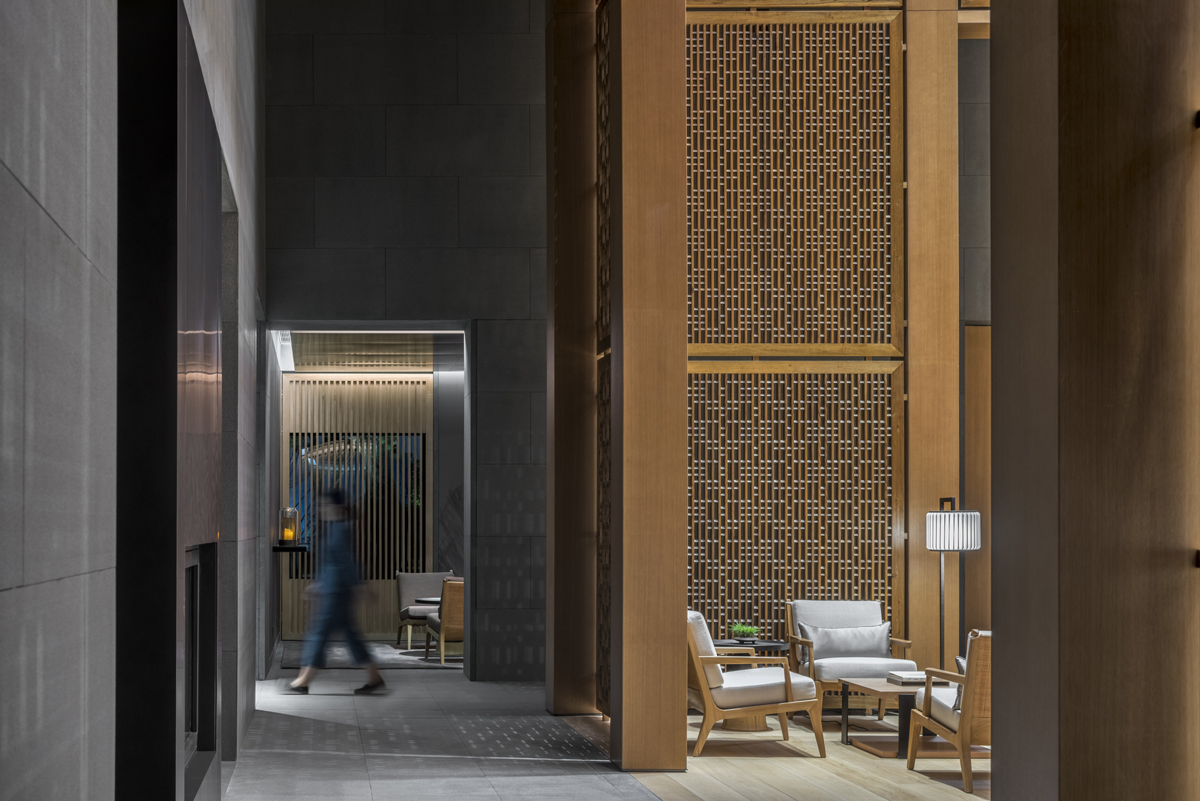
In addition to the 1,000 replanted camphor trees, the resort combines the old relocated buildings with more contemporary structures. The materials and structural elements salvaged from the village have been carefully reused to create 26 apartments in the new resort. Alongside 13 Antique Villas featuring four bedrooms, gardens and a private pool, Amanyangyun also offers 24 new-build Club Suites with private courtyards and outside bathrooms, while the rest of the old houses are for sale as Aman Residences, alongside other new rooms.
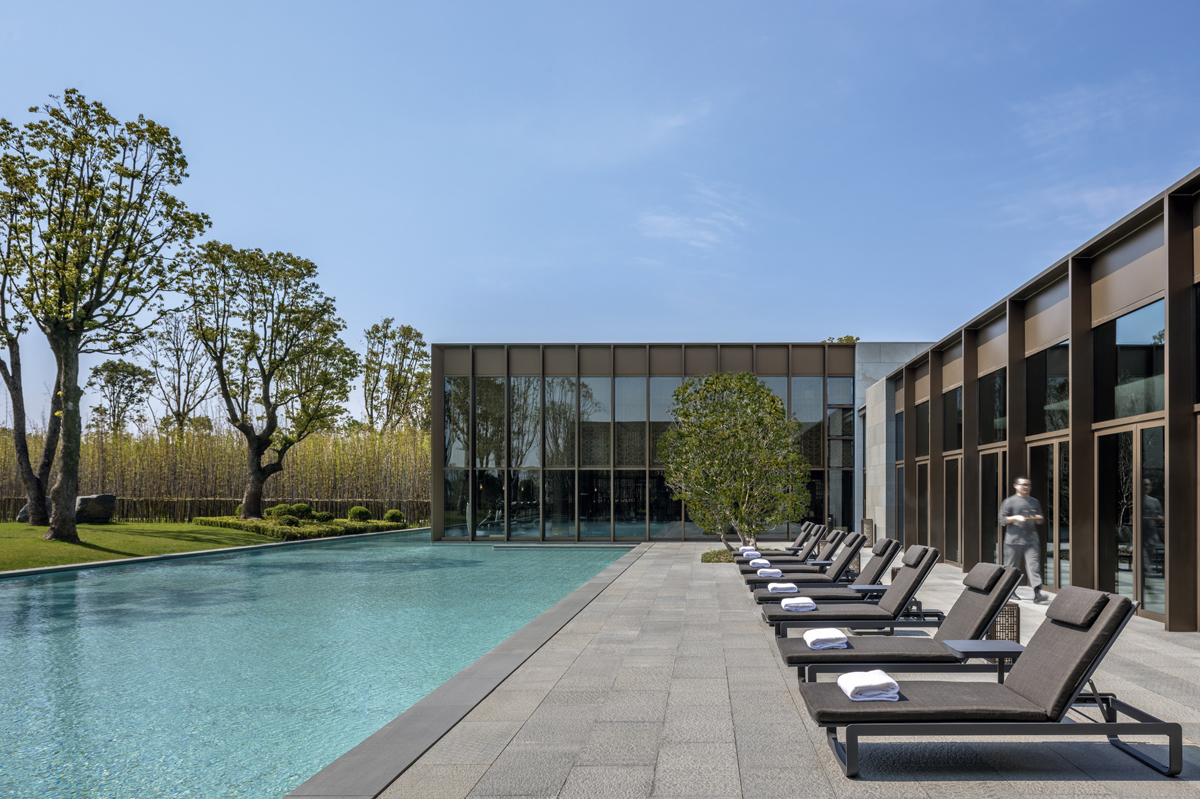
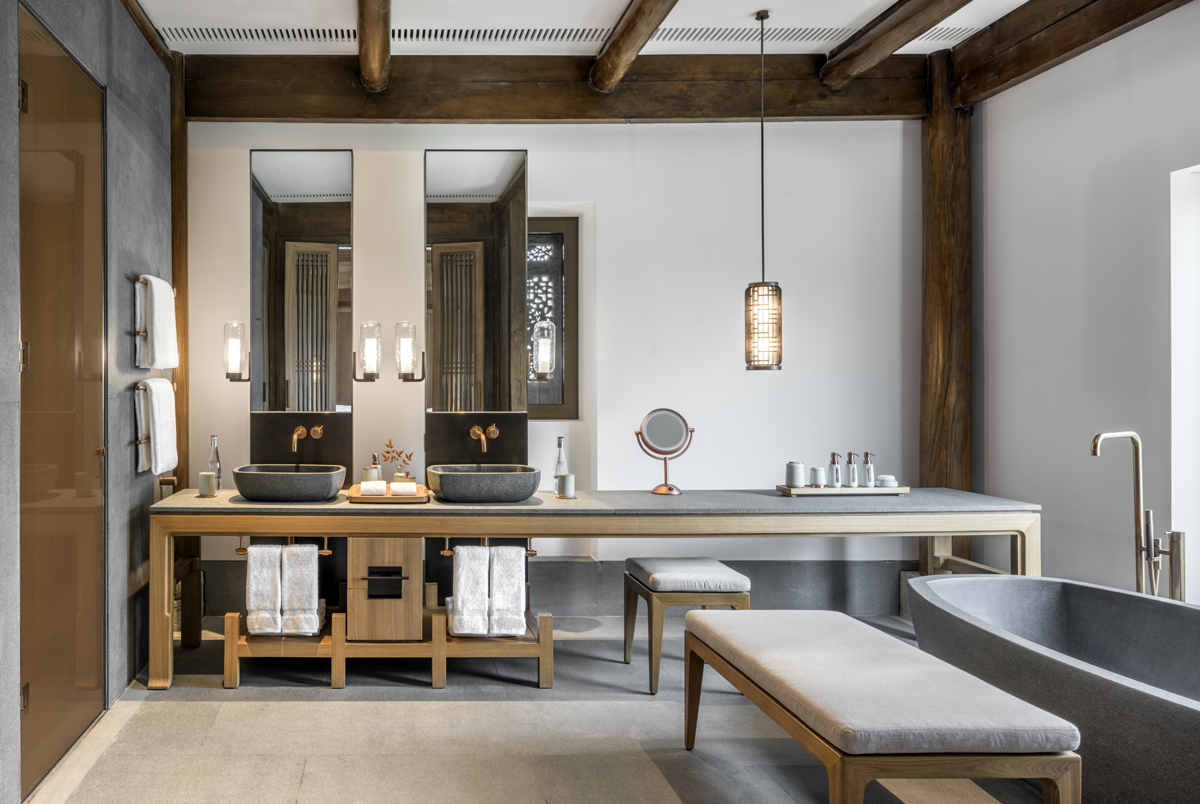
The winner of the Prix Versailles 2018 architecture award, the design by Kerry Hills Architects strikes a harmonious balance between more contemporary elements and styles and the old structures. The stern façades in grey stone are offset in the interiors and internal courtyards by the warmth of wood, which is used throughout, the columns and restored high ceilings and floors, the wood panelling and the modern, simple furniture. Large windows open out onto the gardens and stunning natural surroundings, flooding the mineral surfaces and neutral flooring in the main areas and bathrooms with light.
The ordered, precise layout of the resort helps to create an atmosphere of serenity, introspection and silence, a feeling heightened by the ancient trees, ornamental water features and gardens combined in a landscaping project by the London-based Dan Pearson Studio. In addition to the villas, also hidden amongst the green is the Aman Spa and Wellness Centre, with gym, outside and inside swimming pools and communal areas. There is a wide range of cosmopolitan food on offer, from Chinese cuisine from Jiangxi Province served up by a full six chefs at Lazhu to Italian food at Arva and Japanese – or Washoku – at Nama. On top of that, there’s The Bar, specialising in cocktails, and a Cigar Lounge.

Situated right in the heart of the new resort Is the most precious of all the rebuilt structures. Nan Shufang, named after the royal reading pavilion in the Forbidden City, is a cultural space designed to share knowledge of the arts of ancient China and provide visitors with a space for contemplation. The structure will also be used for performances of Kunqu Opera, tea and incense ceremonies and courses spanning anything from calligraphy to wood carving and guqin, the traditional Chinese stringed instrument.
Even the name of the resort is a way of celebrating ancient Chinese history. Three hundred years ago, the words “Yang Yun” were added to the Yang Xing Zhai pavilion in the Forbidden City by the Qianlong Emperor. Translated into English, these evocative words mean “nourishment of the clouds”, a reference to the nourishment of the human heart, love for the natural world and respect for the rhythms of the universe.
Photo credit: Courtesy of Aman






